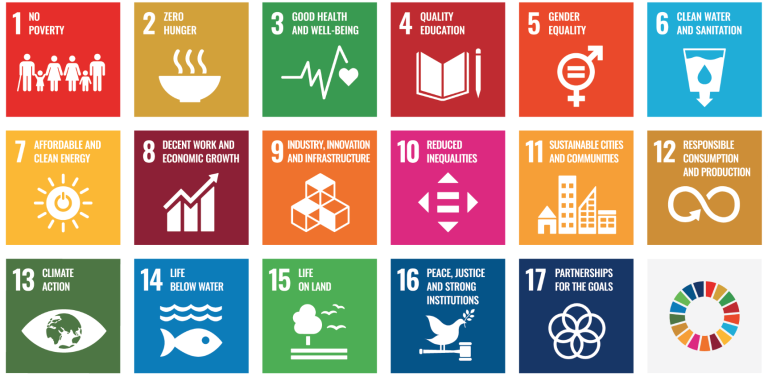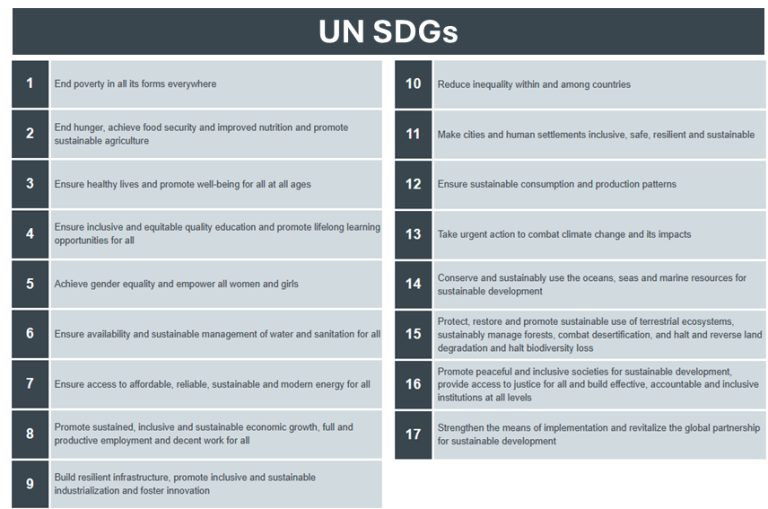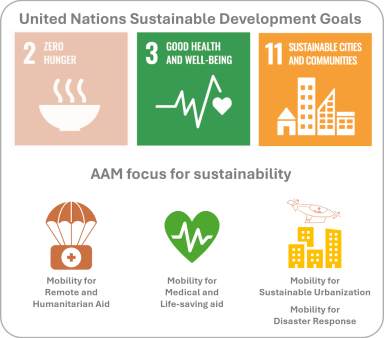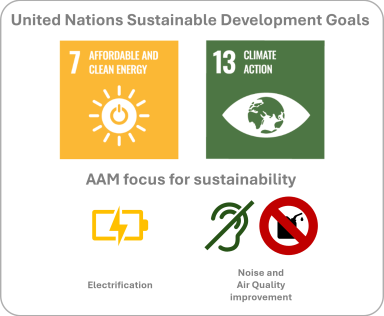Defining Advanced Air Mobility Sustainability through UN Sustainable Development Goals
Advanced Air Mobility (AAM) is commonly thought to have potentially great social and economic benefits for the world, particularly in environmental protection and sustainability. However, while the goals for environmental protection are readily defined, the goals for sustainability need better harmonization and definition. This short note analyses AAM, and through discussions with industry experts, explores the possibility of defining the goals of sustainability in AAM using the United Nations Sustainable Development Goals (UN SDGs).
By Leo Jeoh




